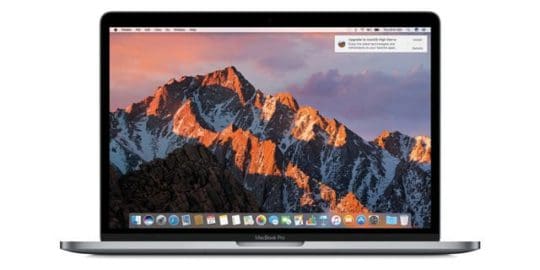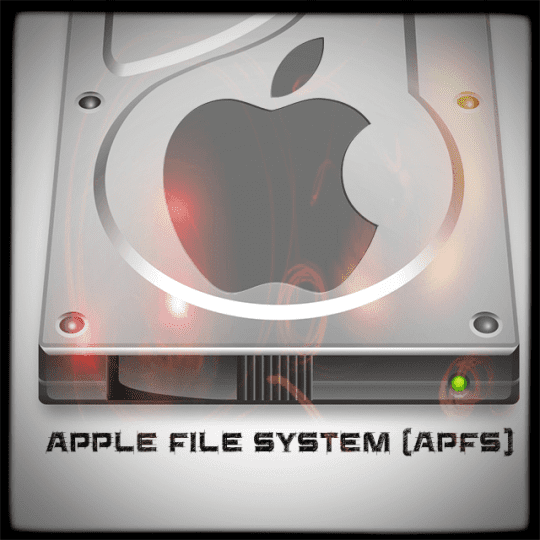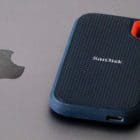If you use Time Machine to back up your Mac, you’ll want to avoid manually converting your backup drive to AFPS.
Apple File System (AFPS) is the company’s new format, and it’s been optimized for SSD and all-flash storage systems. Despite that, it can still work with mechanical hard drives.
It’s also incompatible with Time Machine drives.
To be clear, Time Machine can backup APFS drives, and it can restore backups to an APFS drive. But, the way it works now, your actual Time Machine drive can’t be APFS.
Related Articles
- All About APFS
- Mail Crashing and Other Problems with macOS High Sierra, A Few Tips
- macOS Could Not Be Installed, How-To Fix
- macOS High Sierra Needs to Repair Your Library Message, What to Do
- How To See the User Libraries in macOS and macOS High Sierra

You can run into issues if you convert your HFS+ drive to the APFS format, which can be done in Disk Utility without any warning prompt.
Here’s what you need to know.
Contents
APFS vs HFS+: Time Machine & Hard Links
AFPS doesn’t support directory hard links, which Time Machine relies on heavily in HFS+ formatted drives.
Hard links, put simply, are pointers to a file. Often, there are multiple hard links that point toward a single instance of a file. In the most basic terms possible, Time Machine uses these to save time when backing up a user’s files.
After creating a full backup, Time Machine uses folder-based snapshots. These snapshots use a mix of hard links for files that haven’t changed since the last backup, and actual new files for files that have changed.
But, without hard link support in AFPS, users can run into trouble. 
What The Issue Is
The problem can become apparent if users try to covert an HFS+ volume that’s been used as a Time Machine drive to AFPS.
Because AFPS doesn’t support hard links, the hard links that have been set up during a Time Machine backup will be destroyed.
This basically will “break” your Time Machine backup. Most of the files within your backup will be basically useless.
You won’t be able to copy them from the drive, for example. Instead, they’ll be hit with a “the operation can’t be completed because it isn’t supported” error box.
In addition, Time Machine will no longer recognize the converted APFS volume as a legitimate backup drive.
There’s No Way to Fix It
There doesn’t seem to be a way to fix the issue. You won’t be able to restore those hard links, at least, not currently at the system-level.
You can mitigate some of the APFS problems by converting the drive back to HFS+. But, of course, that requires reformatting the drive. In other words, you’ll have to erase all the content on it. ![How To Setup and Use macOS and OSX Time Machine [GUIDE]](https://appletoolbox.com/wp-content/uploads/2012/05/Time-Machine-System-Prefs-2-540x368.jpg)
It Can Happen by Accident
Worse still, an HFS+ volume can apparently be accidentally converted to APFS thanks to a bug within some versions of macOS High Sierra.
Several cases of this bug have been reported on the Apple Support forums, and other outlets.
Reportedly, when some users go to encrypt an HFS+ volume using macOS High Sierra, they’ll find their hard drive has been inadvertently converted to APFS.
With the incompatibility with Time Machine, this can represent a problem.
What You Should Do Instead
Until Apple updates Time Machine or introduces some sort of fix for its lack of hard link support, the answer is pretty simple: don’t convert your HFS+ drive to APFS.
Just leave it HFS+. There aren’t really many benefits to using APFS on mechanical drives, either. So if you’re not using an SSD volume for your Time Machine backup drive, you won’t have much of a reason to convert to APFS, anyway.
On a similar note, be careful when encrypting any type of HFS+ hard drive using macOS High Sierra. Just to be safe, it might be worth it to actively avoid encrypting your primary Time Machine drive.

Mike is a freelance journalist from San Diego, California.
While he primarily covers Apple and consumer technology, he has past experience writing about public safety, local government, and education for a variety of publications.
He’s worn quite a few hats in the journalism field, including writer, editor, and news designer.










I used tool for retrieve data from time machine backup and rebuild list data base.
So it fixed to me all hard links and i got latest file structure.
Thank you .
Should TM drives have journaling enabled or disabled? and why?
Hi John,
In the recent versions of macOS (currently Mojave,) Time Machine only works with macOS Extended Journaled or XSan format.
The most common format for a Time Machine backup disk is Mac OS Extended Journaled format (also called HFS+), but Time Machine also supports Mac OS Extended (Case-sensitive, Journaled) and Xsan formats.
The journaling improves the data reliability of the drive and TM and supports the larger hard drives that most of us use with our Macs. Journaling also makes it easier to recover data, after a hard drive crash.
Time Machine does not currently support APFS (Apple File System) and Time Machine can’t back up to an APFS-formatted disk.
Thanks for this. Explained why encrypting a Time Machine backup disk stopped it working – macOS had silently converted the disk to APFS.
A nasty an inconvenient bug.
Surprising that apple didn’t ensure that APFS supported hard links.